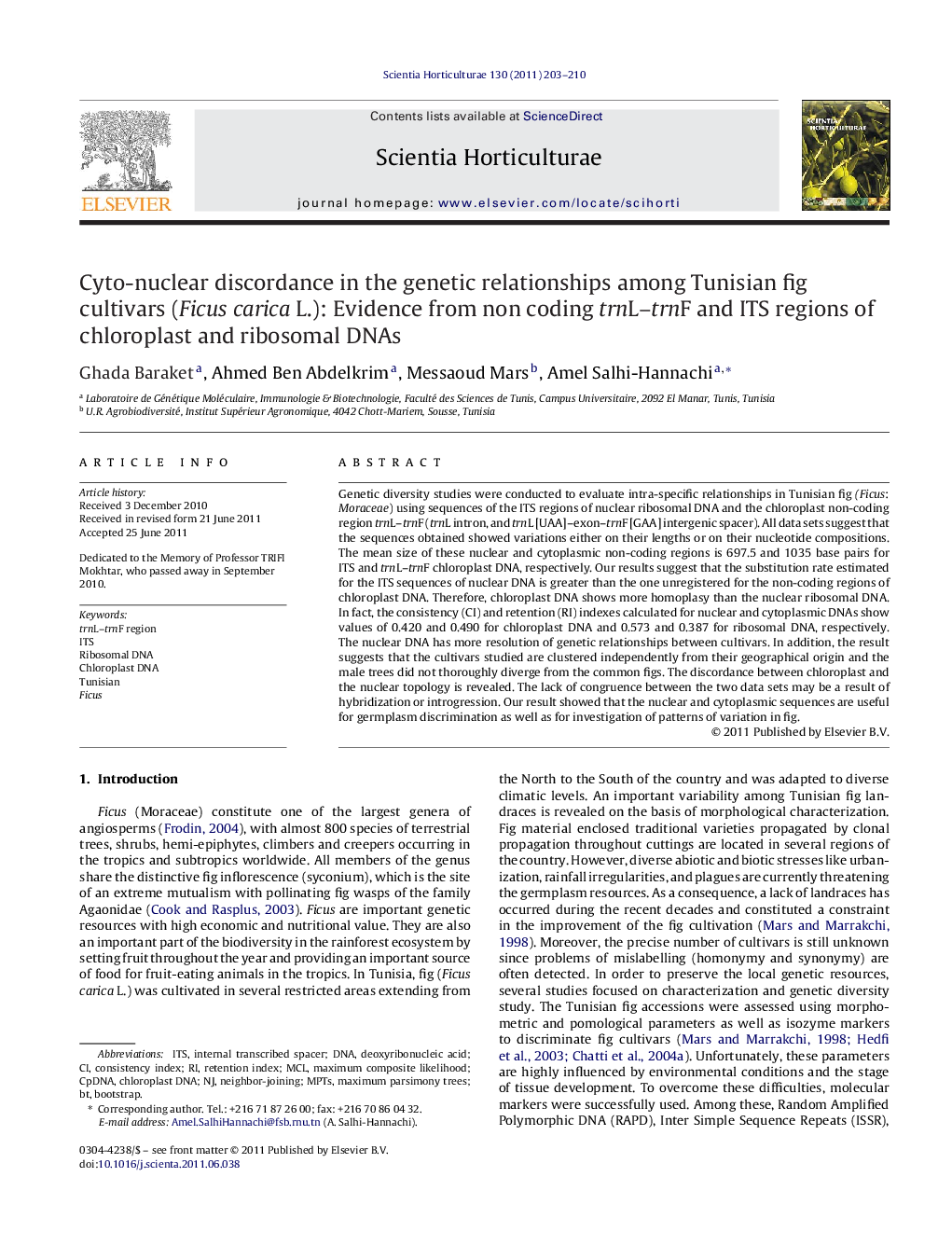| Article ID | Journal | Published Year | Pages | File Type |
|---|---|---|---|---|
| 4568117 | Scientia Horticulturae | 2011 | 8 Pages |
Genetic diversity studies were conducted to evaluate intra-specific relationships in Tunisian fig (Ficus: Moraceae) using sequences of the ITS regions of nuclear ribosomal DNA and the chloroplast non-coding region trnL–trnF (trnL intron, and trnL [UAA]–exon–trnF [GAA] intergenic spacer). All data sets suggest that the sequences obtained showed variations either on their lengths or on their nucleotide compositions. The mean size of these nuclear and cytoplasmic non-coding regions is 697.5 and 1035 base pairs for ITS and trnL–trnF chloroplast DNA, respectively. Our results suggest that the substitution rate estimated for the ITS sequences of nuclear DNA is greater than the one unregistered for the non-coding regions of chloroplast DNA. Therefore, chloroplast DNA shows more homoplasy than the nuclear ribosomal DNA. In fact, the consistency (CI) and retention (RI) indexes calculated for nuclear and cytoplasmic DNAs show values of 0.420 and 0.490 for chloroplast DNA and 0.573 and 0.387 for ribosomal DNA, respectively. The nuclear DNA has more resolution of genetic relationships between cultivars. In addition, the result suggests that the cultivars studied are clustered independently from their geographical origin and the male trees did not thoroughly diverge from the common figs. The discordance between chloroplast and the nuclear topology is revealed. The lack of congruence between the two data sets may be a result of hybridization or introgression. Our result showed that the nuclear and cytoplasmic sequences are useful for germplasm discrimination as well as for investigation of patterns of variation in fig.
► Sequences studied showed variations either on their lengths or on their nucleotide compositions. ► The substitution rate estimated for the ITS is greater than the one unregistered for chloroplast DNA. ► The nuclear DNA has more resolution of genetic relationships between cultivars. ► A discordance between chloroplast and the nuclear topology is revealed. ► The lack of congruence between nuclear and cytoplasmic data sets may be a result of hybridization or introgression.
